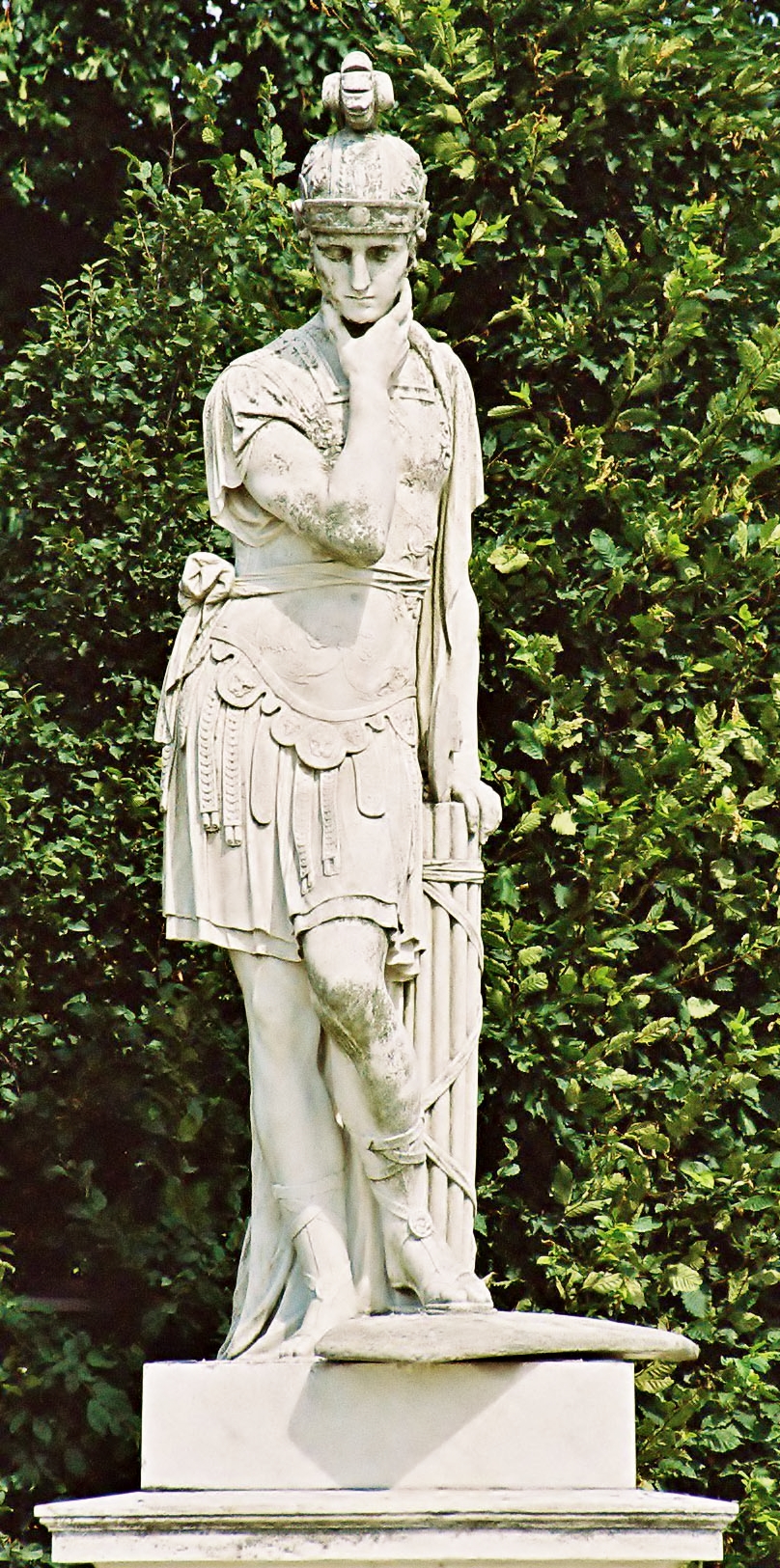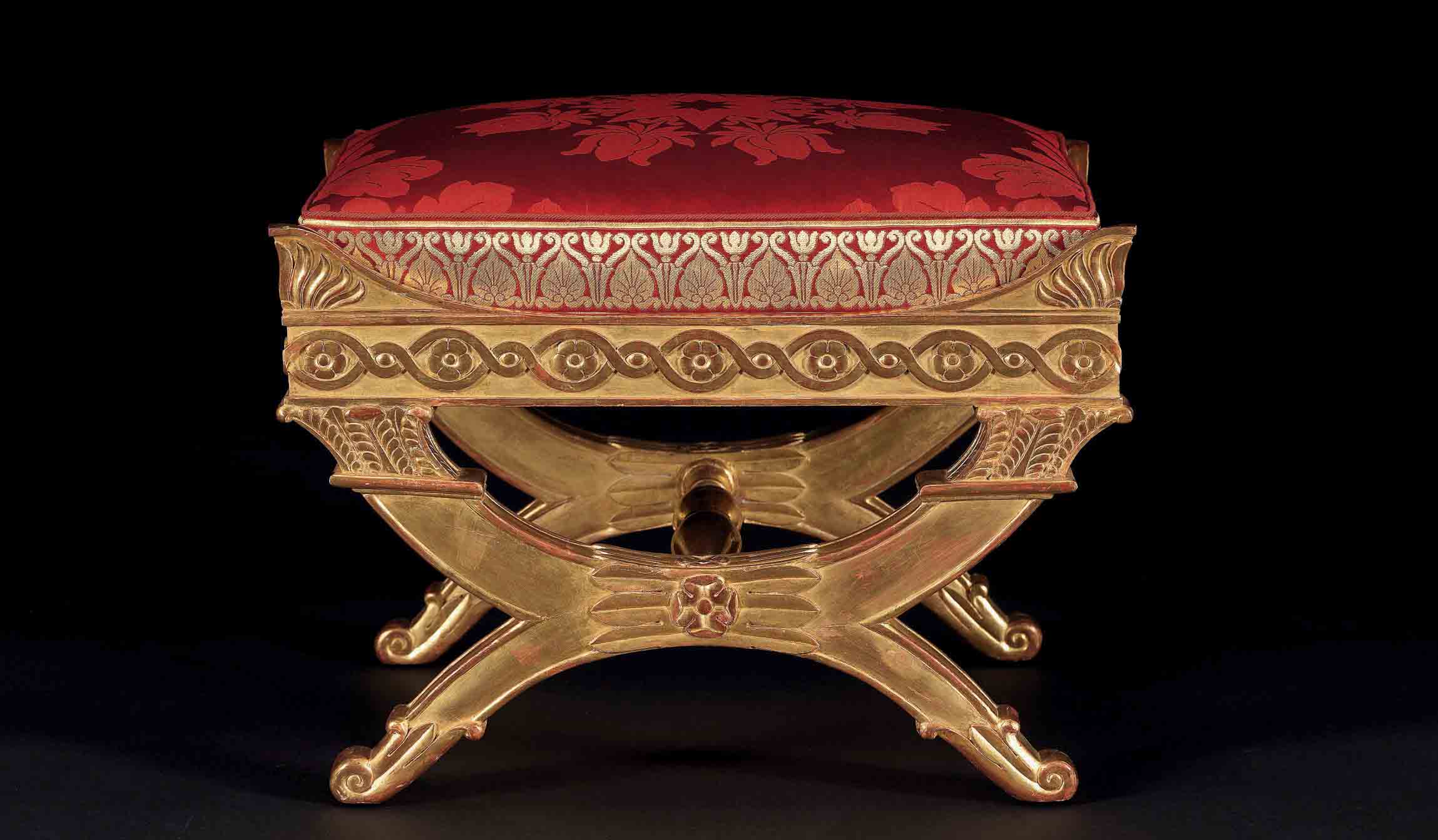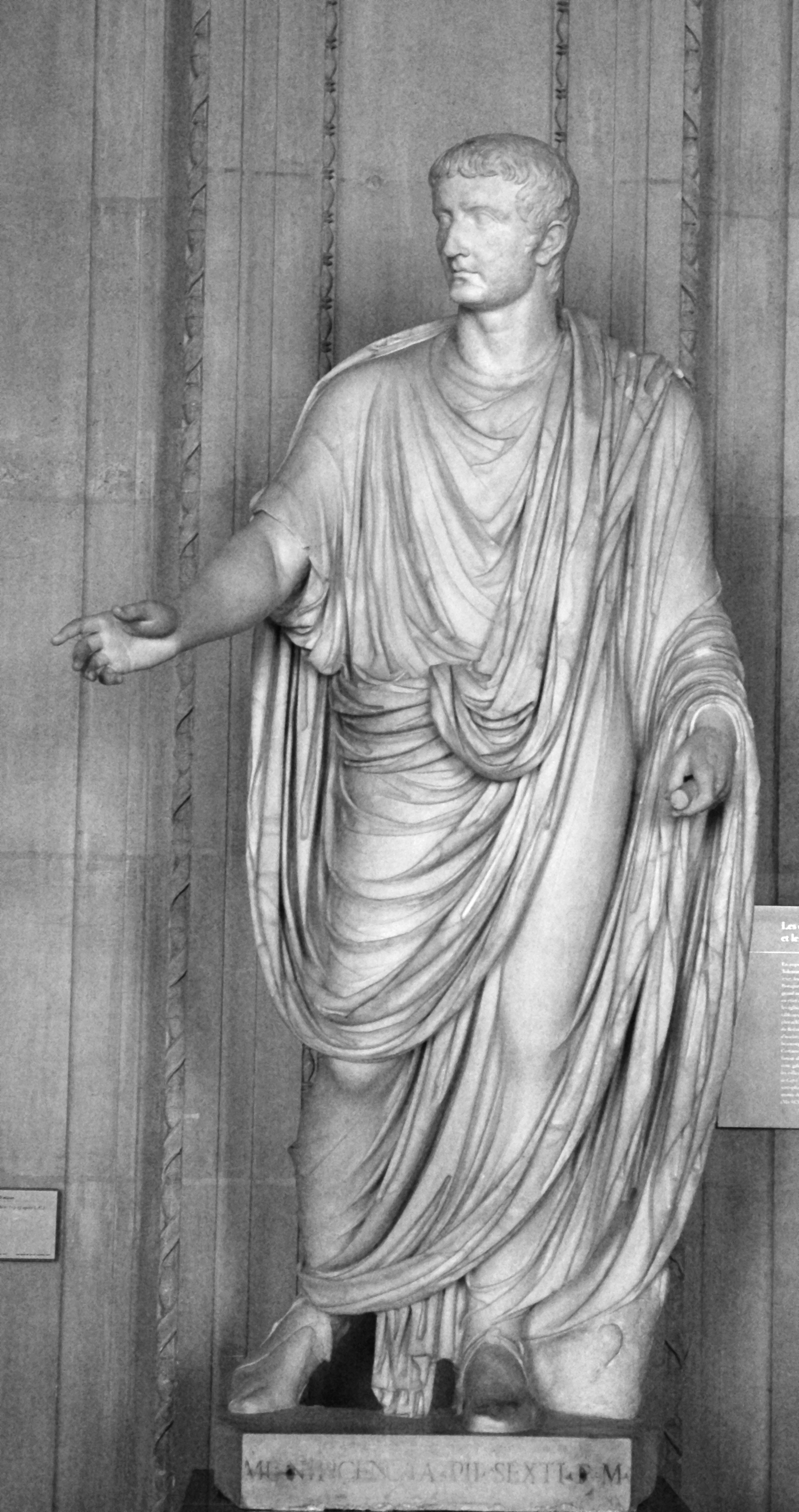|
Roman Dictator
A Roman dictator was an extraordinary Roman magistrate, magistrate in the Roman Republic endowed with full authority to resolve some specific problem to which he had been assigned. He received the full powers of the state, subordinating the other magistrates, Roman consul, consuls included, for the specific purpose of resolving that issue, and that issue only, and then dispensing with those powers immediately. A dictator was still controlled and accountable during his term in office: the Senate still exercised some oversight authority, and the rights of Tribune of the plebs, plebeian tribunes to veto his actions or of the people to appeal them were retained. The extent of a dictator's mandate strictly controlled the ends to which his powers could be directed. Dictators were also liable to prosecution after their terms completed. Dictators were frequently appointed from the earliest period of the Republic down to the Second Punic War (218–201 BC), but the magistracy then ... [...More Info...] [...Related Items...] OR: [Wikipedia] [Google] [Baidu] |
Gaius Julius Caesar, Denarius, 44 BC, RRC 480-10
Gaius, sometimes spelled Caius (other), Caius, was a common Latin praenomen; see Gaius (praenomen). People *Gaius (biblical figure) (1st century AD) *Gaius (jurist) (), Roman jurist *Gaius Acilius *Gaius Antonius *Gaius Antonius Hybrida *Gaius Asinius Gallus *Gaius Asinius Pollio *Gaius Ateius Capito (other), Gaius Ateius Capito *Gaius Aurelius Cotta *Gaius Calpurnius Piso (other), Gaius Calpurnius Piso *Gaius Canuleius, a tribune *Gaius Cassius Longinus *Gaius Charles, American actor *Gaius Claudius Glaber, Roman military commander during the Third Servile War *Gaius Claudius Marcellus Maior, consul in 49 BC *Gaius Claudius Marcellus Minor (88–40 BC), consul in 50 BC *Gaius Cornelius Tacitus, Roman orator famous for the annals and histories *Gaius Duilius *Gaius Fabricius Luscinus *Gaius Flaminius (consul 223 BC), Gaius Flaminius *Gaius Flavius Fimbria (cavalry prefect), Gaius Flavius Fimbria *Gaius Gracchus *Gaius Julius Alpinus Classicianus *Philopapp ... [...More Info...] [...Related Items...] OR: [Wikipedia] [Google] [Baidu] |
Publius Claudius Pulcher (consul 249 BC)
Publius Claudius Pulcher (died 249 BC or 246 BC) was a Roman Republic, Roman politician. Family Pulcher was the son of Appius Claudius Caecus. He was the first of the Claudia gens, Claudii to be given the cognomen "Pulcher" ("handsome"). He was also the father of Appius Claudius Pulcher (consul 212 BC), Appius Claudius Pulcher, consul in 212 BC. After losing the Battle of Drepana, his sister Claudia was prosecuted for insulting the Plebs. Whilst travelling through the streets of Rome, the path that her carriage was taking had been blocked by a crowd. She was then heard to have wished her brother would lose another battle and drown some more of the poorer citizens. Career Curule aedile in 253 BC, as Roman consul, consul in 249 he was given command of the Roman navy, Roman fleet during the First Punic War. He lost the Battle of Drepana against the Carthage, Carthaginians after ignoring a bad omen, in which 93 of his 123 ships, as well as over 20,000 sailors, were lost. According to ... [...More Info...] [...Related Items...] OR: [Wikipedia] [Google] [Baidu] |
Curule Chair
A curule seat is a design of a (usually) foldable and transportable chair noted for its uses in Ancient Rome and Europe through to the 20th century. Its status in early Rome as a symbol of political or military power carried over to other civilizations, as it was also used in this capacity by kings in Europe, Napoleon, and others. History Ancient Rome In the Roman Republic and the Roman Empire, the curule chair (''sella curulis'', supposedly from ''currus'', "chariot") was the seat upon which magistrates holding ''imperium'' were entitled to sit. This includes dictators, '' magistri equitum'', consuls, praetors, '' curule aediles'', and the promagistrates, temporary or ''de facto'' holders of such offices. Additionally, the censors and the flamen of Jupiter ( Flamen Dialis) were also allowed to sit on a curule seat, though these positions did not hold ''imperium''. Livy writes that the three '' flamines maiores'' or high priests of the Archaic Triad of major gods were eac ... [...More Info...] [...Related Items...] OR: [Wikipedia] [Google] [Baidu] |
Toga Praetexta
The toga (, ), a distinctive garment of Ancient Rome, was a roughly semicircular cloth, between in length, draped over the shoulders and around the body. It was usually woven from white wool, and was worn over a tunic. In Roman historical tradition, it is said to have been the favored dress of Romulus, Rome's founder; it was also thought to have originally been worn by both sexes, and by the citizen-military. As Roman women gradually adopted the stola, the toga was recognized as formal wear for male Roman citizens. Women found guilty of adultery and women engaged in prostitution might have provided the main exceptions to this rule.. The type of toga worn reflected a citizen's rank in the civil hierarchy. Various laws and customs restricted its use to citizens, who were required to wear it for public festivals and civic duties. From its probable beginnings as a simple, practical work-garment, the toga became more voluminous, complex, and costly, increasingly unsuited to an ... [...More Info...] [...Related Items...] OR: [Wikipedia] [Google] [Baidu] |
Augury
Augury was a Greco- Roman religious practice of observing the behavior of birds, to receive omens. When the individual, known as the augur, read these signs, it was referred to as "taking the auspices". "Auspices" () means "looking at birds". ''Auspex'', another word for augur, can be translated to "one who looks at birds". Depending upon the birds, the auspices from the gods could be favorable or unfavorable (''auspicious'' or ''inauspicious''). Sometimes politically motivated augurs would fabricate unfavorable auspices in order to delay certain state functions, such as elections. Pliny the Elder attributes the invention of auspicy to Tiresias the seer of Thebes. Over the development of the Roman empire, the definition of augury broadened to include other forms of divination. Haruspicy —the examination of animal entrails—was learned from the Etruscans. The Etruscan practice of observing thunder and lightning was also adapted. In Cicero’s time, the augurs had mostly ... [...More Info...] [...Related Items...] OR: [Wikipedia] [Google] [Baidu] |
Hannibal
Hannibal (; ; 247 – between 183 and 181 BC) was a Punic people, Carthaginian general and statesman who commanded the forces of Ancient Carthage, Carthage in their battle against the Roman Republic during the Second Punic War. Hannibal's father, Hamilcar Barca, was a leading Carthaginian general during the First Punic War. His younger brothers were Mago Barca, Mago and Hasdrubal Barca, Hasdrubal; his brother-in-law was Hasdrubal the Fair, who commanded other Carthaginian armies. Hannibal lived during a period of great tension in the Mediterranean Basin, triggered by the emergence of the Roman Republic as a great power with its defeat of Carthage in the First Punic War. Revanchism prevailed in Carthage, symbolized by the pledge that Hannibal made to his father to "never be a friend of Rome". In 218 BC, Hannibal attacked Saguntum (modern Sagunto, Spain), an ally of Rome, in Hispania, sparking the Second Punic War. Hannibal invaded Italy by Hannibal's crossing of the Alps, cross ... [...More Info...] [...Related Items...] OR: [Wikipedia] [Google] [Baidu] |
Marcus Junius Pera
Marcus Junius Pera (fl. 230216 BC) was a Roman politician before and during the Second Punic War. Career Pera served as one of the Consul, consuls for the year 230 BC; during his consulship, he – along with his colleague Marcus Aemilius Barbula – campaigned against local tribes in Liguria. He also was elected Roman censor, censor for 225 BC with Gaius Claudius Centho as his colleague. They conducted a census of the Roman population: Livy reports the number of citizens as 270,213. Dictatorship During Hannibal's invasion of Italy during the Second Punic War The Second Punic War (218 to 201 BC) was the second of Punic Wars, three wars fought between Ancient Carthage, Carthage and Roman Republic, Rome, the two main powers of the western Mediterranean Basin, Mediterranean in the 3rd century BC. For ..., the Carthage, Carthaginian general all but wiped out an 85,000-strong Roman army at the Battle of Cannae in 216 BC. In doing so, one consul, Lucius Aemilius Paullus (c ... [...More Info...] [...Related Items...] OR: [Wikipedia] [Google] [Baidu] |
Marcus Fabius Buteo
Marcus Fabius Buteo (died around 210-209 BC) was a Roman politician during the 3rd century BC. He served as consul in 245 BC, and as censor, and in 216 BC, being the oldest living ex-censor, he was appointed dictator, ''legendo senatui'', for the purpose of filling vacancies in the senate after the Battle of Cannae. He was appointed by the consul Varro, and, with M. Junius Pera, he was the only dictator to serve a simultaneous term with another. He resigned from the post immediately after he revised the censors' lists and enrolled the new Senate members. By 210 BC to 209 BC, the censor Tuditanus among possible candidates for Princeps Senatus chose instead his kinsman Quintus Fabius Maximus Verrucosus. It is thought that Buteo would have earned this honor if he had been alive to accept it. References * Livy Titus Livius (; 59 BC – AD 17), known in English as Livy ( ), was a Roman historian. He wrote a monumental history of Rome and the Roman people, titled , covering ... [...More Info...] [...Related Items...] OR: [Wikipedia] [Google] [Baidu] |
Battle Of Cannae
The Battle of Cannae (; ) was a key engagement of the Second Punic War between the Roman Republic and Ancient Carthage, Carthage, fought on 2 August 216 BC near the ancient village of Cannae in Apulia, southeast Italy. The Carthaginians and their allies, led by Hannibal, surrounded and practically annihilated a larger Roman army of the mid-Republic, Roman and Italian army under the consuls Lucius Aemilius Paullus (consul 219 BC), Lucius Aemilius Paullus and Gaius Terentius Varro. It is regarded as one of the greatest tactical feats in military history and one of the worst defeats in Roman history, and it cemented Hannibal's reputation as one of antiquity's greatest tacticians. Having recovered from their losses at Battle of the Trebia, Trebia (218 BC) and Battle of Lake Trasimene, Lake Trasimene (217 BC), the Romans decided to engage Hannibal at Cannae, with approximately 86,000 Roman and allied troops. They massed their heavy infantry in a deeper formation than u ... [...More Info...] [...Related Items...] OR: [Wikipedia] [Google] [Baidu] |
Ludi Romani
The ''Ludi Romani'' ("Roman Games"; see '' ludi'') was a religious festival in ancient Rome held annually, starting in 366 BC, from September 12 to September 14. In the 1st century BC, an extra day was added in honor of the deified Julius Caesar on 4 September and extended to September 19. The festival first introduced drama to Rome based on Greek drama. Origins These games—the chief Roman festival—were held in honor of Jupiter, and are said to have been established by Tarquinius Priscus on the occasion of his conquest of the Latin town of Apiolae. However, Dionysius of Halicarnassus and Cicero date them to the Roman victory over the Latins at Lake Regillus during the early Republic, ca. 496 BC. The games were originally organized by the consuls and later by the curule aediles. At first they lasted only a day. A second day was added on the expulsion of the kings in 509 BC, and a third after the first secession of the plebs in 494 BC. From 191 to 171 BC they lasted ... [...More Info...] [...Related Items...] OR: [Wikipedia] [Google] [Baidu] |
Temple Of Jupiter Optimus Maximus
The Temple of Jupiter Optimus Maximus, also known as the Temple of Jupiter Capitolinus (; ; ), was the most important temple in Ancient Rome, located on the Capitoline Hill. It was surrounded by the ''Area Capitolina'', a precinct where numerous shrines, altars, statues and victory trophies were displayed. Traditionally dedicated in 509 BC, the first building was the oldest large temple in Rome. Like many temples in central Italy, it shared features with Etruscan architecture; sources report that Etruscan specialists were brought in for various aspects of its construction, including the making and painting of antefixes and other terracotta decorations. Built of wood, this temple was destroyed by fire in 83 BC. Its reconstruction employed craftsmen summoned from Greece, and the new building is presumed to have been essentially Greek in style, though like other Roman temples it retained many elements of Etruscan form. The second iteration of the temple was completed in 69 BC. ... [...More Info...] [...Related Items...] OR: [Wikipedia] [Google] [Baidu] |





